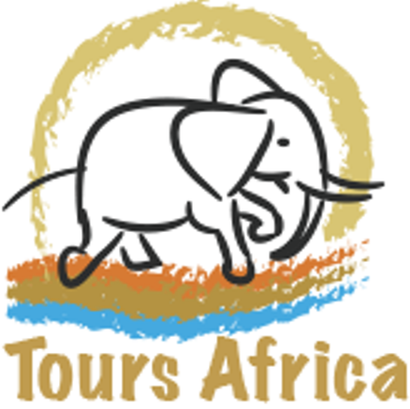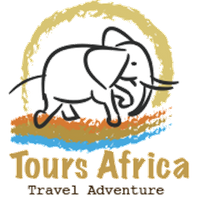
All The Travel Information You Need To Know About Mozambique
Highlights of Mozambique, as well as all the information every traveler should know
Mozambique is a country in Southern Africa bordered by the Indian Ocean to the east, Tanzania to the north, Malawi and Zambia to the northwest, Zimbabwe to the west, and Swaziland and South Africa to the southwest.
The capital of Mozambique is Maputo, which is also the largest city in the country. Other major cities include Beira, Nampula, Tete, Quelimane, Chimoio, Pemba, Inhambane, Xai-Xai and Lichinga.
The only official language of Mozambique is Portuguese, which is spoken mostly as a second language by about half of the population,due to Portuguese colonization over 4 centuries. Common native languages include Makhuwa, Sena, and Swahili.
Mozambique has a tropical climate and the country's natural beauty, wildlife and historic heritage attracts many tourists from all over the world.
Mozambique's Wildlife
Two of Southern Africa’s largest rivers, the Zambezi and Limpopo rivers, cut through the country on route to the Indian Ocean. Other rivers flowing through Mozambique include the Rio Save, the Rio Lúrio and the Rio Rovuma.
The country boasts a 2500 km coastline along the warm Indian Ocean and is a major attraction for visitors, not only because of its beauty but also for its amazing marine wildlife. A favourite amongst locals and tourists would be diving tours, owing to the rich marine life, where you can swim amongst whale sharks, dolphins, turtles and well-preserved coral reefs.
There are various national parks where one can go on safari tours. The most impressive park in Mozambique is Gorongosa National Park which is over 42,000 square kilometres (twice the size of South Africa’s Kruger National Park)! Here you can go on safari drives and see the Big Five amongst other mammals, birds and plants. Other national parks include Bazaruto National Park and Quirimbas National Park.
Mozambican Culture
The culture of Mozambique is mainly derived from its history of Bantu, Swahili, and Portuguese rule. The majority of its inhabitants are black Africans who speak Portuguese and Swahili and practice Roman Catholicism.
The main ethnic groups in Mozambique are Makhuwa, Tsonga, Makonde, Shangaan, Shona, Sena, Ndau, and other indigenous groups.
Mozambique has a strong foothold in arts and crafts with many of their creations having cultural or religious influences. Musical instruments are often handmade. Drums, wind instruments and marimbas are the most prominent instruments in Mozambican music and their music style can be compared with the styles of reggae.
Greetings are lengthy and involve inquiring into the health of each other's family. Don't be offended if the people stand in close proximity to you, as they are physically affectionate and have different views on spacial communication.
Mozambican Currency
The metical (plural: meticais) is the currency of Mozambique and can be divided into 100 centavos. South African rands and US dollars are also widely accepted throughout Mozambique.
Banks and foreign exchange bureaus in Mozambique will change all major currencies into metical. Local banks have branches in most cities which are open from Monday to Friday.
Finding ATM’s in popular locations is fairly common and without a struggle. Credit cards are usually accepted at the upmarket establishments, but apart from this your credit card may not be accepted as a form of payment.
Getting To Mozambique
Maputo International Airport is Mozambique’s main airport. Most international flights arrive from South Africa, although direct international routes also exist between Mozambique and Swaziland, Zimbabwe, Tanzania, Kenya, Ethiopia, Qatar, and Portugal.
Driving to Mozambique is a great way to experience the changing landscapes and scenery. 440km from Johannesburg, you will reach Komatipoort, the border post and entry to Mozambique. Other entry points are the Giriyondo Border Post or Namaacha border post.
If you will be driving, map out your route before you leave so as to avoid getting lost.
Passport, Visa and Other Entry Requirements To Mozambique
To enter Mozambique, you will need a passport valid for at least 6 months after your date of return (except for SA Residents). Citizens of Botswana, Malawi, Mauritius, Swaziland, South Africa, Tanzania, Zambia and Zimbabwe do not require an entry visa when traveling to Mozambique for no more than 30 days
An unabridged birth certificate is imperative to have for all minors travelling with you.
Please contact your nearest Mozambican embassy to find out which documents you may need to enter into the country.
The Best Time To Visit Mozambique
The best time to visit Mozambique depends on your interests, where you want to visit and why you're going.
Rains normally occur between December and March with the rains lasting a few weeks longer in the north of Mozambique than the south. Humidity can be quite prevalent during this period.
By around April or May the humidity decreases, the rains subside and it gets a lot more sunnier. June to October is the dry season, with clear skies, plenty of sun and almost no rain. This is arguably the best time for most people to visit Mozambique.
Diving takes place all-year, although weather on the day may affect the quality of your diving experience. The best time to go to Mozambique for diving would be during the winter months of May to September, as there is less wind and weaker currents.
Mozambique's Malaria Risk and Vaccinations
Mozambique is a Malaria risk country. Visit your nearest Doctor before you leave for Mozambique to get a prescription for anti-malaria medication.
Take along insect repellents to avoid bites and if you can, try arrange to sleep under a mosquito net.
Mozambique's Climate
Mozambique has a tropical climate, with the north often having quite different patterns to the south. The coastal areas of central Mozambique have a risk of cyclones during the rainy season, which generally runs from November to April.
The average temperature in Mozambique is 28 degrees Celsius with the weather along the coast usually maintaining warm and sunny conditions. Inland is cooler than the coast and rainfall higher as the land rises, with most rain between January and March.
Due to the climate, dress codes are quite relaxed, with sarongs, shorts and shirts being quite acceptable. It's advised that you bring sunscreen with, especially if you plan on spending time on the beaches or outdoors.
Driving In Mozambique
Try to avoid travelling during the rainy season, as the roads can become, muddy and difficult to negotiate. If you are planning to go during the rainy season, you may want to make sure you're driving a car that can handle these conditions.
When travelling in Mozambique you will need to carry your cars registration papers. You will also need to make sure that you have third party vehicle insurance which you can sort out at the border.
Please be aware that there have been levels of corruption amongst cops and other officials who target and bribe foreigners. If you're pulled over by a traffic cop for a traffic offence, you may be asked to pay on the spot.
Always insist on a ticket and an official numbered receipt containing the officers name, and never hand them your passport or drivers license. If any official attempts to bribe you, contact the Anti-Corruption Hotline (+258 82 965 7804).
All vehicles travelling in Mozambique must have two red hazard triangles to place in front and behind the vehicle if doing repairs on the side of the road, and reflective vests which must be worn by the car's occupants when repairing or loading a vehicle at the side of the road.
You have to be at least 17 years old to be able to drive in Mozambique and 23 years if you want to hire a car. Driving takes place on the left side of the road.
Mozambique's Electric Plug Points/Outlets
In Mozambique the power sockets are of type C, F and M. The standard voltage is 220 V and the standard frequency is 50 Hz. You can use your electric appliances in Mozambique, if the standard voltage in your country is in between 220 - 240 V.
It's probably best to bring a multi-outlet adapter. If your device is unable to use 220 volts and isn't dual voltage then you'll also need a power converter.
Tipping In Mozambique
Tipping for service is standard practice in Mozambique and is usually 10% in restaurants. For tour guides, $50 per person is acceptable, although depends on the level of their service and ultimately your satisfaction with the tour.
It's advised that you tip using your own discretion. In more remote areas of Mozambique, tipping is not expected but is appreciated.
Dress Code In Mozambique
Mozambique's dress code is relaxed due to the warm climate. It's not uncommon to see people wearing dresses, skirts, sarongs, shorts or T-shirts.
The younger locals are influenced by western fashion styles however locals in the more remote areas tend to maintain traditional clothing such as colourful cloth-like items or robes.
HIV/Aids
HIV/AIDS is a public health concern in Mozambique. With a prevalence of 11.5% among adults between 15-49 years, the virus is spread among the general population
Holiday flings are alluring and hardly uncommon. Please make sure to protect your safety by using condoms in all instances. You alone are responsible for your health and safety.
Dining In Mozambique
Mozambique has an interesting cuisine that has been strongly influenced by the Portuguese who colonised the country for 500 years. Many of the dishes you come across in Mozambique will have peri-peri sauces or some form of chilli flavour.
Due to Mozambique's vast coasts and prominent fishing industry, seafood is extremely popular on the menus. Mozambique is famous for their prawns and shrimp, which they usually combine with rice, chips (fries) and peri-peri.
Seafood is cheap in Mozambique and forms part of almost every person's diet. When ordering seafood at restaurants, you are bound to be satisfied with the quality of fresh seafood as well as the portion sizes.
It's highly recommended to dig in to Mozambique's traditional culture and try out a local dish without any Portuguese influences, namely Matata, which is a seafood stew made using clams in a peanut sauce. Another traditional dish to try out would be Zambézian chicken grilled with palm oil.
Attractions
- Bazaruto Archipelago
- Praia do Tofo (Tofo)
- Inhaca Island (Maputo)
- Iglesia de San Antonio de la Polana (Maputo)
- Gorongosa National Park
- Maputo Central Market (Maputo)
- Bilene (Xai-Xai)
- Mozambique Island
- Two Mile Reef (Bazaruto Island)
- Barra Beach (Inhambane Province)
Leave a comment
Comments will be approved before showing up.






Saskia Carelse
Author